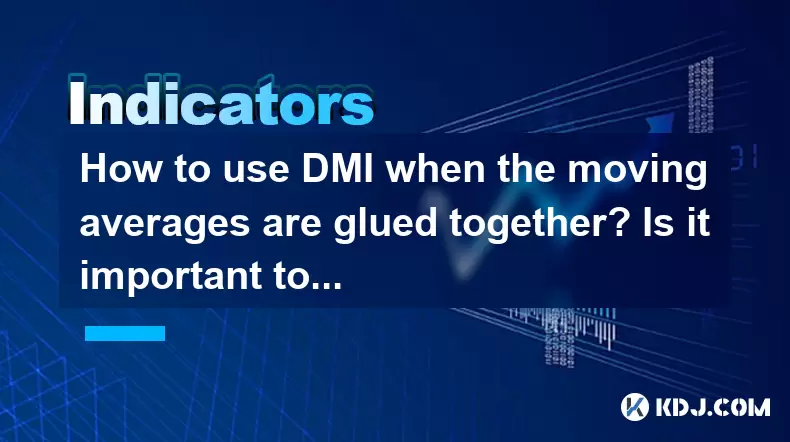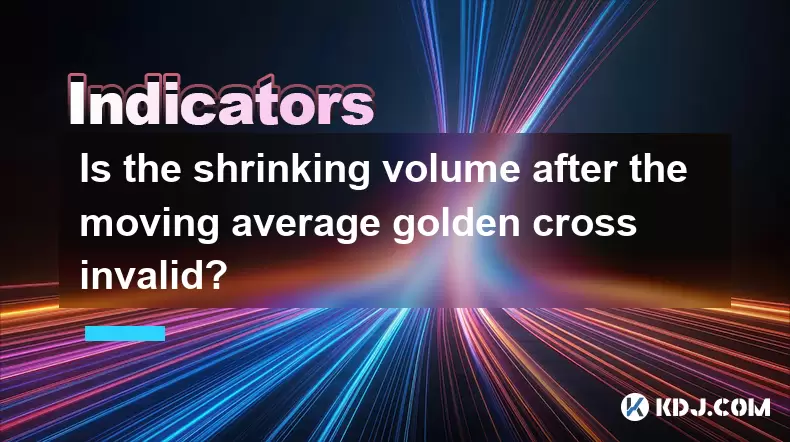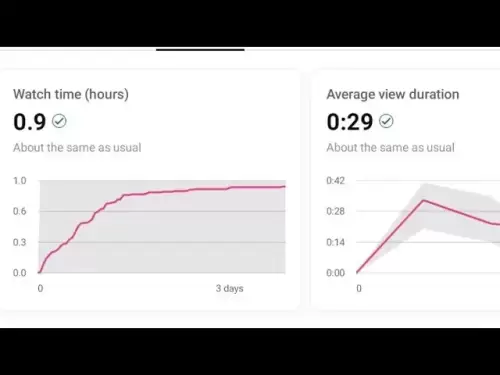-
 Bitcoin
Bitcoin $103,456.1111
0.49% -
 Ethereum
Ethereum $2,414.9631
0.02% -
 Tether USDt
Tether USDt $1.0006
0.05% -
 XRP
XRP $2.1083
0.24% -
 BNB
BNB $634.8760
-0.76% -
 Solana
Solana $139.8437
1.94% -
 USDC
USDC $0.9998
-0.01% -
 TRON
TRON $0.2737
0.97% -
 Dogecoin
Dogecoin $0.1602
0.20% -
 Cardano
Cardano $0.5737
1.08% -
 Hyperliquid
Hyperliquid $32.9779
-2.54% -
 Bitcoin Cash
Bitcoin Cash $474.8886
-1.80% -
 Sui
Sui $2.6272
-1.99% -
 Chainlink
Chainlink $12.4878
0.14% -
 UNUS SED LEO
UNUS SED LEO $8.9234
0.35% -
 Stellar
Stellar $0.2411
-0.18% -
 Avalanche
Avalanche $17.0274
-0.70% -
 Toncoin
Toncoin $2.8936
-1.11% -
 Shiba Inu
Shiba Inu $0.0...01112
-0.58% -
 Litecoin
Litecoin $82.6982
1.33% -
 Hedera
Hedera $0.1423
-0.05% -
 Monero
Monero $314.8455
3.26% -
 Ethena USDe
Ethena USDe $1.0006
0.01% -
 Polkadot
Polkadot $3.4043
1.14% -
 Dai
Dai $0.9999
0.01% -
 Bitget Token
Bitget Token $4.2848
-0.13% -
 Uniswap
Uniswap $6.8748
-5.45% -
 Pepe
Pepe $0.0...09661
0.52% -
 Pi
Pi $0.5359
1.19% -
 Aave
Aave $242.9168
-1.03%
How to use DMI when the moving averages are glued together? Is it important to aggregate the DMI signal of multiple moving averages?
DMI can provide valuable trend insights even when moving averages are glued together; aggregating signals from multiple MAs enhances reliability and reduces false signals.
May 27, 2025 at 09:57 pm

Introduction to DMI and Moving Averages
The Directional Movement Index (DMI) is a technical indicator that helps traders determine the strength of a trend. It consists of three lines: the Positive Directional Indicator (+DI), the Negative Directional Indicator (-DI), and the Average Directional Index (ADX). When used in conjunction with moving averages, DMI can provide valuable insights into market trends and potential trading opportunities. However, a common challenge traders face is when moving averages are "glued together," meaning they are very close to each other and do not provide clear signals. This article will explore how to use DMI effectively in such scenarios and whether aggregating DMI signals from multiple moving averages is beneficial.
Understanding "Glued Together" Moving Averages
When moving averages are glued together, it means that the short-term and long-term moving averages are very close to each other, resulting in a lack of clear divergence. This situation often indicates a period of consolidation or low volatility in the market. In such cases, relying solely on moving averages to make trading decisions can be challenging. However, the DMI can still provide valuable insights even when moving averages are not providing clear signals.
Using DMI When Moving Averages Are Glued Together
To use DMI effectively when moving averages are glued together, traders should focus on the following steps:
- Analyze the ADX Line: The ADX line measures the strength of the trend. When moving averages are glued together, look for the ADX line to determine if there is any underlying trend strength. An ADX value above 25 typically indicates a strong trend, while a value below 20 suggests a weak trend or a range-bound market.
- Monitor +DI and -DI Crossovers: Even when moving averages are close, the +DI and -DI lines can still provide valuable signals. A crossover of the +DI above the -DI suggests bullish momentum, while a crossover of the -DI above the +DI indicates bearish momentum. These crossovers can be used to enter trades even in a market with glued-together moving averages.
- Combine with Other Indicators: Since glued-together moving averages may not provide clear signals, combining DMI with other indicators such as the Relative Strength Index (RSI) or the Moving Average Convergence Divergence (MACD) can help confirm potential trading opportunities.
Importance of Aggregating DMI Signals from Multiple Moving Averages
Aggregating DMI signals from multiple moving averages can provide a more comprehensive view of market trends and help traders make more informed decisions. Here are some key points to consider when aggregating DMI signals:
- Diversify Timeframes: Using DMI signals from multiple moving averages with different timeframes can help identify both short-term and long-term trends. For example, combining the DMI signals from a 50-day moving average with those from a 200-day moving average can provide insights into both short-term and long-term market movements.
- Enhance Signal Reliability: Aggregating DMI signals can enhance the reliability of trading signals. If multiple moving averages show similar DMI signals, it increases the confidence in the identified trend. Conversely, if the signals from different moving averages diverge, it may indicate a less reliable trend.
- Reduce False Signals: By aggregating DMI signals, traders can reduce the likelihood of false signals. A single moving average might provide a false signal due to short-term market noise, but aggregating signals from multiple moving averages can help filter out such noise and focus on more robust trends.
Practical Steps to Aggregate DMI Signals
To aggregate DMI signals from multiple moving averages, follow these detailed steps:
- Choose Moving Averages: Select multiple moving averages with different timeframes. Common choices include the 20-day, 50-day, and 200-day moving averages.
- Calculate DMI for Each Moving Average: Apply the DMI indicator to each moving average. This will generate +DI, -DI, and ADX lines for each moving average.
- Compare +DI and -DI Crossovers: Look for crossovers of the +DI and -DI lines for each moving average. If the majority of the moving averages show a +DI above the -DI, it suggests a bullish trend, and vice versa.
- Assess ADX Values: Compare the ADX values for each moving average. If the majority of the ADX values are above 25, it indicates a strong trend across different timeframes.
- Combine Signals: Combine the signals from all moving averages to form a comprehensive view of the market. If most moving averages show similar DMI signals, it increases the confidence in the identified trend.
Case Study: Using DMI with Glued Together Moving Averages
Consider a scenario where the 50-day and 200-day moving averages of Bitcoin are glued together. Despite the lack of clear signals from the moving averages, the DMI can still provide valuable insights:
- ADX Analysis: The ADX line for both moving averages shows values around 22, indicating a moderate trend strength.
- +DI and -DI Crossovers: The +DI line for the 50-day moving average crosses above the -DI line, suggesting bullish momentum in the short term. However, the +DI and -DI lines for the 200-day moving average remain close without a clear crossover, indicating a lack of strong long-term momentum.
- Aggregating Signals: By aggregating the DMI signals from both moving averages, traders can see that the short-term trend is bullish, while the long-term trend is neutral. This combined insight can help traders make more informed decisions, such as entering short-term bullish trades while being cautious about long-term positions.
Frequently Asked Questions
Q: Can DMI be used effectively without moving averages?
A: Yes, DMI can be used effectively without moving averages. The DMI itself provides signals about the strength and direction of the trend. However, combining DMI with moving averages can enhance the accuracy of trend identification and provide additional confirmation for trading signals.
Q: How can traders differentiate between a genuine trend and market noise when using DMI?
A: To differentiate between a genuine trend and market noise, traders should look for consistent signals across different timeframes and combine DMI with other indicators such as the RSI or MACD. A genuine trend will typically show consistent DMI signals and be confirmed by other indicators, while market noise may result in erratic and inconsistent signals.
Q: Is it necessary to adjust DMI settings based on different cryptocurrencies?
A: Yes, it can be beneficial to adjust DMI settings based on different cryptocurrencies. Each cryptocurrency may have unique volatility and market behavior, so traders may need to experiment with different DMI periods and thresholds to find the most effective settings for each asset.
Q: How can traders use DMI to set stop-loss and take-profit levels?
A: Traders can use DMI to set stop-loss and take-profit levels by monitoring the ADX line and +DI/-DI crossovers. A rising ADX line indicates increasing trend strength, which can be used to set wider take-profit levels. Conversely, a falling ADX line suggests weakening trend strength, which can be used to set tighter stop-loss levels. Additionally, +DI/-DI crossovers can signal potential reversals, helping traders adjust their stop-loss and take-profit levels accordingly.
Disclaimer:info@kdj.com
The information provided is not trading advice. kdj.com does not assume any responsibility for any investments made based on the information provided in this article. Cryptocurrencies are highly volatile and it is highly recommended that you invest with caution after thorough research!
If you believe that the content used on this website infringes your copyright, please contact us immediately (info@kdj.com) and we will delete it promptly.
- Ruvi AI: The Audited Token Poised to Outshine Shiba Inu
- 2025-06-22 10:25:12
- Dypians, DeFi, and Sei Network: A Deep Dive into the Latest Trends
- 2025-06-22 10:25:12
- Hacken Security Breach Highlights Risks Across Ethereum and BSC
- 2025-06-22 08:25:12
- SHIB Price, Forecasts, Timelines: Will Shiba Inu Ever Reach the 'One-Cent Dream'?
- 2025-06-22 08:25:12
- Avalanche vs. Ruvi AI: Why Smart Money's on This Audited Token
- 2025-06-22 08:45:12
- Bitcoin Demand on Pause: What's Next for the Crypto King?
- 2025-06-22 08:45:12
Related knowledge

Does the second surge in the RSI overbought zone induce more?
Jun 22,2025 at 08:35am
Understanding the RSI Overbought ZoneThe Relative Strength Index (RSI) is a momentum oscillator commonly used in technical analysis to measure the speed and change of price movements. It ranges from 0 to 100, with values above 70 typically considered overbought and values below 30 considered oversold. When the RSI enters the overbought zone for the firs...

Does the sudden contraction of ATR indicate the end of the trend?
Jun 20,2025 at 11:14pm
Understanding ATR and Its Role in Technical AnalysisThe Average True Range (ATR) is a technical indicator used to measure market volatility. Developed by J. Welles Wilder, ATR calculates the average range of price movement over a specified period, typically 14 periods. It does not indicate direction—only volatility. Traders use ATR to gauge how much an ...

Is it invalid if the DMI crosses but the ADX does not expand?
Jun 21,2025 at 09:35am
Understanding the DMI and ADX RelationshipIn technical analysis, the Directional Movement Index (DMI) consists of two lines: +DI (Positive Directional Indicator) and -DI (Negative Directional Indicator). These indicators are used to determine the direction of a trend. When +DI crosses above -DI, it is often interpreted as a bullish signal, while the opp...

How to filter false signals when the SAR indicator frequently flips?
Jun 21,2025 at 08:43pm
Understanding the SAR Indicator and Its BehaviorThe SAR (Stop and Reverse) indicator is a popular technical analysis tool used in cryptocurrency trading to identify potential reversals in price movement. It appears as a series of dots placed either above or below the price chart, signaling bullish or bearish trends. When the dots are below the price, it...

Is the trend continuation when the Williams indicator is oversold but there is no rebound?
Jun 20,2025 at 11:42pm
Understanding the Williams %R IndicatorThe Williams %R indicator, also known as the Williams Percent Range, is a momentum oscillator used in technical analysis to identify overbought and oversold levels in price movements. It typically ranges from 0 to -100, where values above -20 are considered overbought and values below -80 are considered oversold. T...

Is the shrinking volume after the moving average golden cross invalid?
Jun 22,2025 at 10:42am
Understanding the Moving Average Golden Cross in CryptocurrencyIn the world of cryptocurrency trading, technical indicators play a crucial role in decision-making. One such indicator is the moving average golden cross, which occurs when a short-term moving average crosses above a long-term moving average, typically signaling a bullish trend. This event ...

Does the second surge in the RSI overbought zone induce more?
Jun 22,2025 at 08:35am
Understanding the RSI Overbought ZoneThe Relative Strength Index (RSI) is a momentum oscillator commonly used in technical analysis to measure the speed and change of price movements. It ranges from 0 to 100, with values above 70 typically considered overbought and values below 30 considered oversold. When the RSI enters the overbought zone for the firs...

Does the sudden contraction of ATR indicate the end of the trend?
Jun 20,2025 at 11:14pm
Understanding ATR and Its Role in Technical AnalysisThe Average True Range (ATR) is a technical indicator used to measure market volatility. Developed by J. Welles Wilder, ATR calculates the average range of price movement over a specified period, typically 14 periods. It does not indicate direction—only volatility. Traders use ATR to gauge how much an ...

Is it invalid if the DMI crosses but the ADX does not expand?
Jun 21,2025 at 09:35am
Understanding the DMI and ADX RelationshipIn technical analysis, the Directional Movement Index (DMI) consists of two lines: +DI (Positive Directional Indicator) and -DI (Negative Directional Indicator). These indicators are used to determine the direction of a trend. When +DI crosses above -DI, it is often interpreted as a bullish signal, while the opp...

How to filter false signals when the SAR indicator frequently flips?
Jun 21,2025 at 08:43pm
Understanding the SAR Indicator and Its BehaviorThe SAR (Stop and Reverse) indicator is a popular technical analysis tool used in cryptocurrency trading to identify potential reversals in price movement. It appears as a series of dots placed either above or below the price chart, signaling bullish or bearish trends. When the dots are below the price, it...

Is the trend continuation when the Williams indicator is oversold but there is no rebound?
Jun 20,2025 at 11:42pm
Understanding the Williams %R IndicatorThe Williams %R indicator, also known as the Williams Percent Range, is a momentum oscillator used in technical analysis to identify overbought and oversold levels in price movements. It typically ranges from 0 to -100, where values above -20 are considered overbought and values below -80 are considered oversold. T...

Is the shrinking volume after the moving average golden cross invalid?
Jun 22,2025 at 10:42am
Understanding the Moving Average Golden Cross in CryptocurrencyIn the world of cryptocurrency trading, technical indicators play a crucial role in decision-making. One such indicator is the moving average golden cross, which occurs when a short-term moving average crosses above a long-term moving average, typically signaling a bullish trend. This event ...
See all articles
























































































